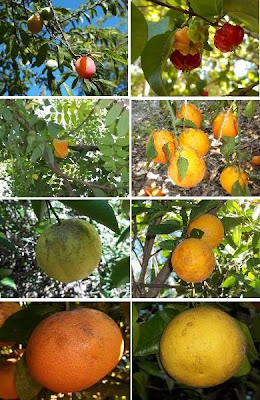Jatropha gossypifolia is a flowering plant grown more for the foliage than the flowers. The new growth is a deep purplish-red color. As the leaves mature, they turn green. The plant is always in a state of growth, so the colorful foliage is always present. The growth habit is upright to a height of 5-6 feet.
Flowers are smallish, and brick red, appearing in clusters on new growth. Leaves are 3-5 lobed. One of the most interesting features is that the leaf margins, veins, and petioles are covered with hairs topped by a sticky gland.

Sometimes known as Bellyache bush,
Jatropha gossypifolia is native to Central and South America, and the Caribbean. It is a tropical plant recommended for USDA Zones 10-11, so it won't tolerate a lot of cold. In areas with brief freezes, the plant dies back to the ground and comes up again when the weather warms. They'll often reseed themselves too, so one way or another you'll probably get some to come back if you live in a subtropical climate. In northern Australia, this species has escaped cultivation and is classified as a noxious weed.
This species has a watery sap, but the sap is not a skin irritant like that of other Jatrophas. In fact, the sap has been used for generations in Nigeria as a haemostatic agent to stop bleeding. The fluid is applied directly to bleeding nose, gums, or skin. A study done at the Obafemi Awolowo University Teaching Hospitals in Nigeria confirms its effectiveness and safety. The
research findings were published in the Journal of Medicinal Plants in 2007.
The leaves are also applied to boils, carbuncles, eczema, and itches.
Disclaimer: Medical uses are listed for informational purposes only, and may not be appropriate for all people.












































